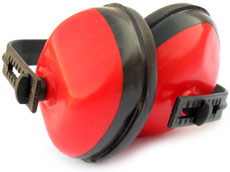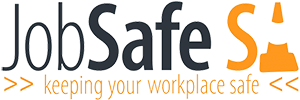Chapter 4, Part 1 of the Work Health and Safety Regulations 2012
 NOISE IN THE WORKPLACE
NOISE IN THE WORKPLACE
Noise needs to be controlled in the workplace as it damages the delicate nerve cells in the inner ear that transmit sound messages to the brain. If this happens the nerve cells turn to scar tissue that does not respond to sound. This damage occurs very slowly and painlessly but is permanent.
Each year more than 900 South Australians suffer from noise-related injuries. The annual cost of workers compensation claims for noise-related injuries in South Australia is over $6 million.
Top 3 noise-related injury industries:
1. 48.7 % manufacturing
2. 10 % construction
3. 10 % transport and storage
Hearing loss may occur either immediately due to a sudden loud noise (1.4%) or gradually due to exposure to excessive noise over a period of time (98%). Long term exposure to noise is painless and irreversible.
Noise can make a workplace dangerous as:
- it can stop you from hearing warning signals and
- it can make it hard to communicate with other workers/managers/customers
Exposure to noise in our work environment can have the following effects:
- annoyance and speech interference
- distraction – interference with concentration and thought processes
- sleep disturbance
- fatigue and aggression leading to lower productivity
- reduced immune response
- heart disease and increased blood pressure
- stress and a greater risk of accidents
- tinnitus (ringing in the ears)
- ulcers
- dull hearing after a shift
- difficulty in hearing high-pitched sounds
The Work Health and Safety Regulations 2012 state that the exposure standard is
- an eight hour equivalent continuous A-weighted sound pressure level, of 85 decibels (dB (A)) referenced to 20 micropascals: and
- a C-weighted peak sound pressure level, of 140 dB (C) referenced to 20 micropascals.
This simply means that a person conducting a business or undertaking (PCBU) must ensure that appropriate risk control measures are taken when noise levels in the workplace:
- exceed an eight hour noise level equivalent of 85 dB or
- peak at more than 140 dB
Decibels are not like normal numbers. They can’t be added or subtracted in the normal way. The decibel scale is logarithmic. On this scale, an increase of 3 dB therefore represents a doubling or twice as much sound energy. This means that the length of time a worker could be exposed to the noise is reduced by half for every 3 dB increase in noise level if the same noise energy is to be received.
| Time per day to give an exposure equal to exposure standard: 1. 85 dB – 8 hours2. 88 dB 4 hours3. 91 dB 2 hours4. 94 dB 1 hour5. 97 dB 30mins6. 100 dB 15 minutes7. 103 dB 7 minutes8. 106 dB 3 minutes 9. 109 dB 2 minutes |
If you suspect that any plant or equipment is a source of noise above 80 dB (or equivalent exposure) then have an assessment conducted of the workplace by a competent, qualified person. A PCBU must provide and maintain a workplace, plant and systems of work to ensure that a worker is not, whilst at work, exposed to a noise level that exceeds the exposure standards.
REDUCING NOISE EXPOSURE IN THE WORKPLACE
Noise levels can be measured using a sound level meter, which detects the pressure of sound waves as they move through the air. Reducing exposure to excessive noise in the workplace can be accomplished in many different ways:
- change or modify equipment / buy quiet machinery and equipment
- locate the equipment in a more isolated area, or soundproof the room.
- make sure that people spend time working in quiet areas also.
- use personal hearing protection such as ear plugs or ear muffs.
- maintaining machinery and equipment routinely;
- muffling engine and compressed air noise;
- placing a barrier between the noise source and the employee; or
- isolating the worker from the source in an insulated booth or room
Decide what changes can be put into place immediately, and which ones are longer term, consult with those who will use (or will be affected by) the changes before they are permanently put in place.
| Common noise sources and their typical sound levels | |
| Typical sound level in dB | Sound source |
| 140 | Jet engine at 30m |
| 130 | Rivet hammer (pain can be felt at this threshold) |
| 120 | Rock drill |
| 110 | Chain saw |
| 100 | Sheet metal workshop |
| 90 | Lawn mower |
| 85 | Front-end Loader |
| 80 | Kerbside Heavy traffic |
| Lathe | |
| 70 | Loud conversation |
| 60 | Normal conversation |
| 40 | Quiet radio music |
| 30 | Whispering |
| 0 | Hearing threshold |
USEFUL LINKS
Noise exposure calculator
To work out the level of noise you are exposed to at your workplace use the calculator provided by the Health and Safety Executive of the UK.
Workplace Safety – Noise pollution Factsheet
Excessive noise levels over a long period of time will damage your hearing. This may happen so gradually and painlessly that you may not notice the minor deterioration from one day to the next.
Acknowledgments:
Work Health and Safety Regulations 2012
Safework SA www.safework.sa.gov.au
Managing Noise and Preventing Hearing Loss at Work Code of Practice
Key Legislation & Regulations mentioned in the Code of Practice are:
WHS Legislation; Sections 19, 46-48
WHS Regulations; Regulations 34-39, 44-46, 58-59
